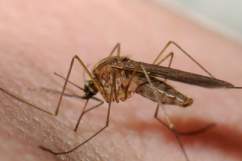Last week, a scientist cleaning out old storage at the National Institute of Health in Maryland discovered smallpox virus samples from the 1950s. The smallpox samples were found in a FDA lab housed on the NIH campus.
The CDC released a statement about the incident claiming that the vials had not been breached, and that there had been no risk of infection by anyone at the lab or the general public:
Late on July 7, the vials were transported safely and securely with the assistance of federal and local law enforcement agencies to CDC’s high-containment facility in Atlanta. Overnight PCR testing done by CDC in the BSL-4 lab confirmed the presence of variola virus DNA. Additional testing of the variola samples is under way to determine if the material in the vials is viable (i.e., can grow in tissue culture). This testing could take up to 2 weeks. After completion of this testing, the samples will be destroyed.
There are only two places in the world where smallpox samples are officially allowed, according to international health agreements. The two WHO (World Health Organization) offical repositories for smallpox samples are: the CDC in Atlanta, GA, and the State Research Centre of Virology and Biotechnology (VECTOR) in Novosibirsk, Russia.
This is the first time in recent history that the smallpox virus has been found outside these two centers.
Smallpox Eradication
Smallpox is deadly, and killed over 300 million people in the 20th century alone. It killed over one-third of its victims. Smallpox disappeared from the United States by 1950 and was declared globally eradicated in 1980. It was the first disease that was successfully fought on a global scale with international cooperation. It is also the first disease that was fully eradicated by vaccination.
Post-Eradication
Post-eradication, the only instances of smallpox were in the 1980s, and they were related to research samples at a university lab in the UK. The WHO first recommended destruction of the virus in 1986. Because of US and Russian resistance, the WHO agreed to postpone destruction for research purposes. However, their most recent recommendation is for destruction of the virus.
A 2010 review by a team of public health experts appointed by the World Health Organization concluded that no essential public health purpose is served by the U.S. and Russia continuing to retain virus stocks.The latter view is frequently supported in the scientific community, particularly among veterans of the WHO Smallpox Eradication Program.





Comments
Stray Smallpox Vials Found, FBI Investigation Underway